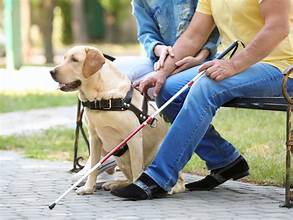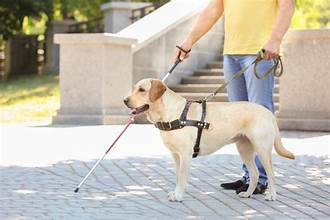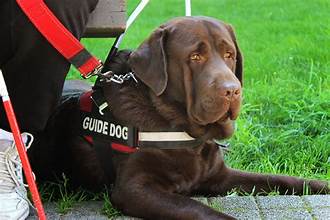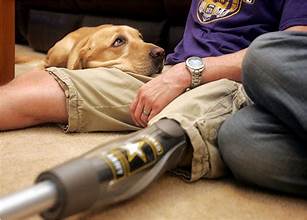What is a Guide Dog?
They are specially trained service animals for individuals who are blind or have visual impairments. Guide dogs undergo intensive training, unlike therapy or emotional support animals. To perform specific tasks that ensure their handler’s safety and well-being. They act as navigators, helping their owners. Move confidently through a world designed primarily for those with sight.
How Service Dogs Assist the Blind
These Dogs are specially trained to perform a wide variety of tasks, including:

- Navigational support – Helping avoid obstacles, stop at curbs, and find doors, steps, or crossings.
- Route following – Assisting their handler in finding specific locations.
- Hazard avoidance – Stopping in front of dangers such as moving vehicles or sudden drop-offs.
This unique ability allows people with vision impairments to move about with far greater independence.
Benefits of Having a Guide Dog
Beyond just being a physical assistant, service dogs for the blind can also provide:
- Increased independence – Handlers can travel more freely without relying solely on human assistance.
- Confidence and safety – Knowing a trusted guide dog is by their side brings peace of mind.
- Companionship – They will form strong emotional bonds with their owners, resulting in them becoming more than just a working partner. They become a trusted companion. They are a source of comfort, reducing feelings of isolation and fostering a deep sense of companionship.
- Social connection – Guide dogs often serve as a conversation starter, opening doors for interaction. Helping their handlers feel more connected to their community. This social aspect of having a guide dog can help combat feelings of loneliness.
Training and Matching Process
Guide dogs must undergo a rigorous training program that could last up to two years. They learn advanced obedience, navigation skills. How to remain focused in distracting environments. They are carefully matched with handlers based on personality, lifestyle, and mobility needs.
Organizations like Guide Dogs for the Blind and The Seeing Eye specialize in training and pairing dogs with individuals who are blind or have low vision. These life-changing animals with individuals who need them most.
Rights of Service Dogs for the Blind
Guide dogs in the United States are protected under the Americans with Disabilities Act (ADA).
This means:

- They are allowed in public spaces, which include restaurants, stores, transportation, and housing.
- Businesses and establishments must provide access legally, regardless of their pet policies.
- Handlers are not required to carry special documentation for their dog.
These protections ensure that service dogs can perform their job without barriers.
Final Thoughts
For individuals who are blind or have visual impairments. A guide dog is not just a helper, it’s a partner in independence. These remarkable dogs, through their training. Loyalty and devotion open doors to freedom, safety, and a fuller life. Their role is not just significant; they are also deeply appreciated and respected.
If you or someone you know is considering applying for a guide dog. Connecting with accredited training organizations is the best first step toward a brighter, more independent future.




